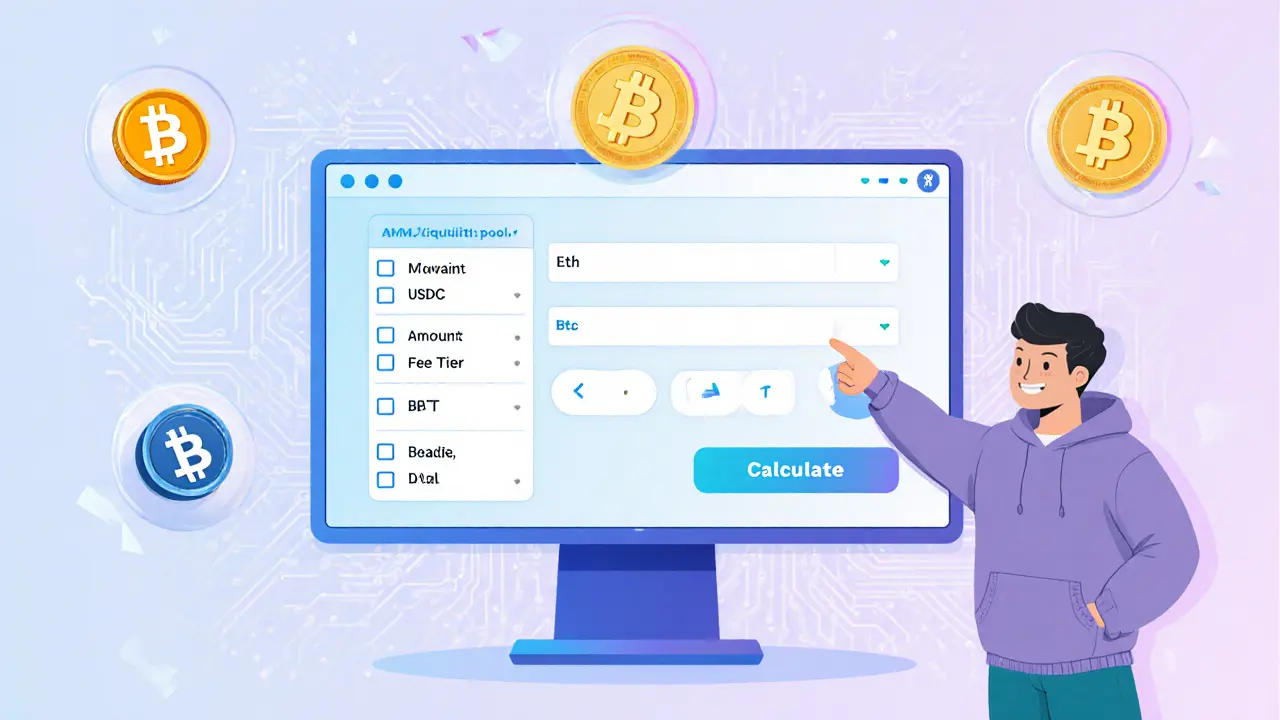Concentrated Liquidity: Boosting DeFi Returns
When working with Concentrated Liquidity, a technique that lets liquidity providers allocate their capital inside chosen price intervals on automated market maker (AMM) platforms. Also known as range orders, it dramatically improves capital efficiency compared to traditional uniform liquidity.
To understand why concentrated liquidity matters, think about the core engine behind most DeFi swaps: the Automated Market Maker, a smart‑contract system that prices assets based on the ratio of two token reserves. Classic AMMs such as the early versions of Uniswap spread liquidity evenly across the entire price curve, which means a lot of capital sits idle when the market price drifts outside the most active range. By letting providers pick a tighter band, concentrated liquidity lets the same amount of capital generate higher fees, essentially turning a modest pool into a high‑yield machine.
Key Players and How They Interact
The main actor in this setup is the Liquidity Provider, any user who deposits token pairs into a pool to earn trading fees. With concentrated liquidity, LPs set a lower and upper price bound—often called a "price range"—where they want their assets to be active. When the market price stays inside this range, every trade pulls directly from the LP’s allocated capital, which translates into higher fee capture per dollar invested. If the price moves out of the range, the LP’s assets become passive until the price re‑enters, reducing exposure to unnecessary risk.
One of the most popular implementations is Uniswap V3, the third iteration of Uniswap that introduced customizable price ranges for each liquidity position. Uniswap V3 splits the price curve into discrete "ticks" and lets LPs pick any tick interval they prefer. This granularity enables sophisticated strategies: a trader can concentrate liquidity around a support level, a yield farmer can allocate more capital where they expect frequent trades, and a market maker can hedge exposure by spreading across multiple narrow bands.
The benefits don’t stop at higher fees. Concentrated liquidity also reduces slippage for traders because more depth is available right where the price is moving. In practice, a swap of $10,000 on a tightly concentrated pool can cost a fraction of the fees that the same swap would incur on a uniformly distributed pool. This creates a virtuous cycle: traders get better prices, LPs earn more fees, and the pool becomes more attractive for both sides.
However, there are trade‑offs. Choosing the wrong range can lead to "out‑of‑range" positions where the LP earns almost nothing while still bearing impermanent loss. Managing these positions requires active monitoring or automation tools that rebalance ranges as prices shift. Some platforms now offer "smart liquidity" services that auto‑adjust ticks based on market data, but they usually charge a small fee for the convenience.
Another real‑world factor is gas cost. Each time an LP adjusts their range, they need to submit a transaction, which on congested networks can eat into profits. This is why many LPs stick to broader ranges on high‑volume assets (like ETH/USDC) and reserve narrow bands for more stable or less volatile pairs.
Understanding the math helps too. The core formula for fee earnings in a concentrated pool is proportional to the amount of capital inside the active range divided by the total liquidity across the entire curve. By concentrating, an LP can achieve up to ten‑fold higher fee per capital if the price stays within the chosen band. Of course, the upside is balanced by the risk that the price leaves the band, at which point earnings drop sharply.
From a broader DeFi perspective, concentrated liquidity is reshaping how capital moves across ecosystems. Protocols that rely on deep order books—like traditional exchanges—now see decentralized counterparts offering comparable depth without a central order book. This trend encourages more institutional interest, as the efficiency gains align with the goals of low‑latency, high‑volume trading.
Below you’ll find a curated collection of articles that dive deeper into the mechanics, strategies, and real‑world examples of concentrated liquidity. Whether you’re a newcomer curious about how to get started, a seasoned LP looking for advanced range‑management tips, or just someone who wants to keep up with the latest DeFi innovations, the posts ahead cover the full spectrum.
A detailed review of Pangea Swap, the Klaytn DEX with concentrated liquidity, covering tech, performance, governance, risks, and how it compares to Uniswap V3 and PancakeSwap.
Learn how to earn fees by providing liquidity to AMM pools, avoid impermanent loss, and use advanced strategies for better DeFi returns.




 Finance
Finance




